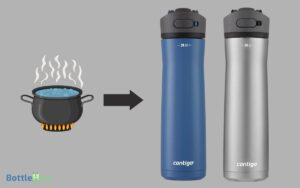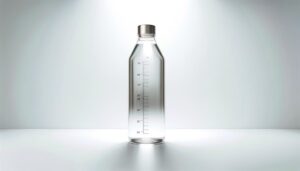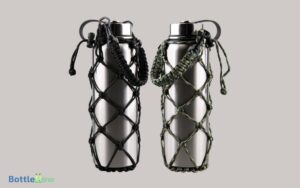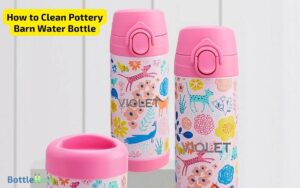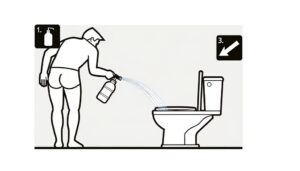Can You Put Champagne in a Water Bottle? Explained!
You shouldn’t put champagne in a water bottle due to significant risks to its effervescence and flavor profile.
Champagne relies on precise conditions to retain its bubbles and delicate flavors. Plastic water bottles can alter aromatic compounds, allowing oxygen to permeate and degrade taste.
Additionally, chemical leaching from plastic can impart unwanted flavors and increase bacterial growth.
For transporting champagne, choose purpose-built containers like champagne-specific flasks or insulated wine totes. These options help maintain champagne’s integrity, offering a superior drinking experience.
To fully appreciate why preserving champagne’s essence is essential, explore how different materials interact with this elegant beverage further.
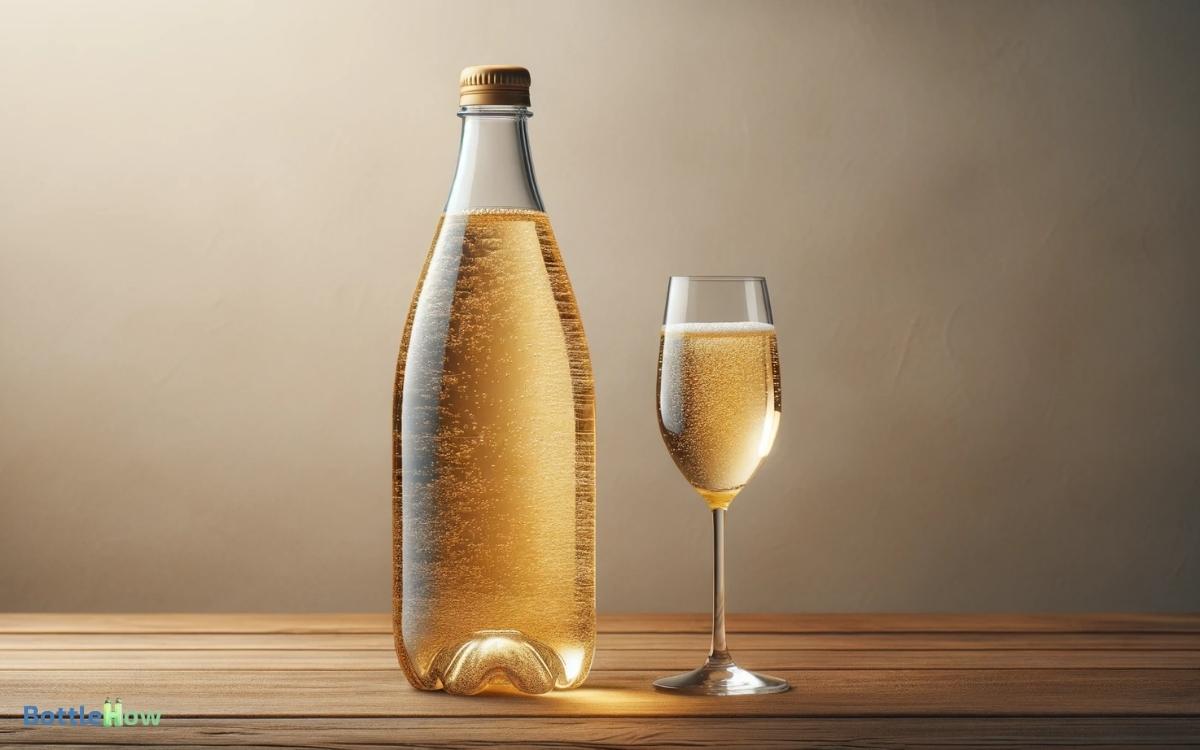
Key Takeaways
The Appeal of Portability
The convenience of carrying champagne in a water bottle can be undeniably appealing for those who enjoy luxurious beverages on the go.
Imagine attending a picnic, outdoor concert, or beach outing where traditional glass bottles are impractical. By opting for a water bottle, you simplify transport and eliminate the risk of breakage.
This method also offers discretion, enabling you to savor your favorite bubbly without drawing undue attention.
Portability guarantees that your champagne experience isn’t confined to formal settings but can be enjoyed in diverse, spontaneous environments.
However, it’s crucial to evaluate the compatibility of champagne with water bottles to maintain its quality and effervescence. Understanding these factors will help you make an informed decision about this appealing option.
Champagne’s Unique Properties
Champagne boasts a unique combination of effervescence, delicate flavors, and precise serving conditions that set it apart from other beverages.
Its intricate blend of Chardonnay, Pinot Noir, and Pinot Meunier grapes creates a symphony of subtle notes ranging from citrus to brioche.
You must appreciate the precise temperature and glassware required to experience its full bouquet.
Champagne’s bubbles, or mousse, are integral to its texture and taste, enhancing its complexity. Serving it too warm or inappropriately can flatten its vivacity and distort its character.
Unlike other drinks, Champagne’s unique properties demand a thoughtful approach to preservation and presentation, ensuring that each sip is as intended by its vintners. Understanding these nuances is essential for a truly exceptional experience.
Effervescence and Carbonation
To truly appreciate Champagne’s unique properties, one must understand its effervescence and carbonation, which are pivotal to its sensory experience.
Effervescence refers to the bubbles that rise and burst, releasing aromatic compounds. Carbonation is the dissolved carbon dioxide that forms these bubbles.
Consider the following points to grasp their importance:
- Bubble Formation: The bubbles create a visual spectacle and contribute to the texture.
- Aroma Release: As bubbles rise, they carry volatile aromas to the surface, enhancing the olfactory experience.
- Mouthfeel: The presence of carbonation provides a lively and invigorating sensation on the palate.
Understanding these elements will deepen your appreciation for Champagne’s intricate nature.
Impact on Flavor
A myriad of factors, including temperature and container type, profoundly influence Champagne’s flavor profile. When you transfer Champagne into a water bottle, several elements impact its taste.
The material of the bottle can alter the aromatic compounds, while the seal may affect carbonation retention, leading to a duller flavor.
Here’s a comparative analysis:
| Factor | Ideal Bottle | Water Bottle |
|---|---|---|
| Temperature | Best, cooler | Varies, less control |
| Material | Glass, inert | Plastic, reactive |
| Seal Integrity | High, airtight | Variable, not ideal |
| Flavor Impact | Preserved, complex | Altered, muted |
Material Considerations
When examining the material of the container, it’s crucial to comprehend how different substances can interact with Champagne’s complex chemical makeup.
The effervescence, acidity, and aromatic compounds in Champagne are sensitive, and the container material can greatly influence these properties.
Here are three key aspects to keep in mind:
- Chemical Reactivity: Some materials might interact with Champagne, changing its taste and bouquet.
- Permeability: Containers that allow air or other gases to pass through can diminish Champagne’s quality.
- Thermal Conductivity: The ability of a material to maintain a stable temperature impacts the preservation of Champagne’s delicate balance.
Plastic Vs. Glass
Understanding how Champagne interacts with container materials leads us to evaluate the pros and cons of plastic versus glass.
Glass, a traditional choice, preserves Champagne’s effervescence and taste. Its non-porous nature prevents chemical interactions, ensuring the integrity of the beverage. Additionally, glass’s weight and rigidity offer a protective barrier against environmental factors.
On the other hand, plastic is lightweight and shatterproof, making it convenient for transport. However, plastic’s porous surface can absorb flavors and odors, potentially altering the Champagne’s profile.
The flexibility of plastic also risks compromising the bottle’s seal, leading to carbonation loss. Also, plastic may contain chemicals like BPA, which can leach into the Champagne.
Therefore, while plastic offers convenience, glass remains superior for maintaining Champagne’s quality.
Temperature Control
Proper temperature control is crucial for preserving Champagne’s delicate flavors and effervescence.
When transferring Champagne to a water bottle, make sure you maintain its ideal temperature to prevent spoilage.
Here are three critical steps you should follow:
- Storage Temperature: Keep the Champagne between 45°F and 55°F. This range helps preserve the wine’s complex aromas and taste.
- Serving Temperature: Before serving, chill the Champagne to 40°F to 45°F. This enhances its invigorating quality and balances its acidity.
- Avoiding Temperature Fluctuations: Sudden changes can cause the Champagne to lose its carbonation and flavor integrity.
Airtight Seals
An airtight seal is essential to maintain Champagne’s carbonation and prevent oxidation when transferring it to a water bottle.
Without a proper seal, the effervescence will dissipate rapidly, leaving the Champagne flat and unappealing.
Make sure the water bottle you choose has a reliable sealing mechanism, such as a screw-top or snap-on lid, designed to lock in gases.
Additionally, inspect the bottle for any potential defects that could compromise its sealing capabilities.
It’s important to remember that even the slightest air leakage can greatly impact the quality of your Champagne.
By prioritizing an airtight seal, you preserve the beverage’s distinctive effervescent character and vibrant flavor profile, ensuring an enjoyable experience when you’re ready to indulge.
Potential Contamination Risks
When considering putting champagne in a water bottle, you should be aware of potential contamination risks.
Plastic bottles can lead to chemical leaching, bacterial growth, and significant taste alteration, all of which compromise the quality and safety of the champagne.
Ensuring the integrity of your beverage requires understanding these risks and taking appropriate precautions.
Chemical Leaching Concerns
Storing champagne in a plastic water bottle raises significant concerns about chemical leaching, particularly the risk of harmful substances like BPA seeping into the liquid.
When champagne interacts with plastic, several factors can exacerbate this issue:
- Acidity: The high acidity of champagne can cause plastic to degrade faster, increasing the likelihood of chemicals leaching.
- Alcohol Content: Alcohol acts as a solvent, which can draw out harmful substances from the plastic more readily.
- Pressure: The carbonation in champagne creates pressure, which can stress the plastic, further promoting leaching.
Understanding these risks is important because consuming leached chemicals can have adverse health effects.
By recognizing these dangers, you can make informed decisions about how to store your champagne safely.
Bacterial Growth Risk
Guaranteeing champagne remains safe and pristine requires using containers specifically designed for alcoholic beverages and adhering to stringent hygiene practices. This precaution safeguards both your health and the champagne’s integrity.
Additionally, transferring champagne into a plastic water bottle can greatly increase the risk of bacterial growth, potentially compromising the beverage’s safety and quality.
Plastic bottles, especially those previously used, can harbor microscopic bacteria that thrive in moist environments.
Even minute residues left from water or other liquids can act as a breeding ground for harmful microorganisms.
When you expose champagne to these conditions, you’re not just risking contamination but also altering its intended effervescence and taste profile.
Furthermore, plastic is more permeable to air than glass, further exacerbating bacterial proliferation.
Taste Alteration Factors
Exposing champagne to plastic water bottles doesn’t just elevate bacterial risks; it also leads to significant taste alterations due to potential chemical interactions and contamination. The plastic material can impart undesirable flavors, undermining the champagne’s delicate profile.
Here are three primary taste alteration factors you should consider:
- Chemical Leaching: Plastics can leach chemicals like phthalates and BPA, which may infuse the champagne with off-putting tastes.
- Oxygen Permeability: Plastic bottles are more permeable to oxygen than glass, causing oxidation that can degrade the champagne’s flavor and aroma.
- Residual Odors: Plastic can retain odors from previous contents, which may taint the subtle notes of the champagne.
Understanding these factors guarantees you preserve the champagne’s intended quality and sophistication.
Suitability of Different Bottles
When considering the suitability of different bottles for storing champagne, you must evaluate both material and safety factors.
Different materials can greatly impact the quality and taste of the champagne, as well as pose potential safety risks.
Understanding these impacts guarantees you maintain the integrity and enjoyment of this delicate beverage.
Material and Safety Considerations
Selecting the appropriate bottle for storing champagne is essential because of the specific material and safety considerations necessary to preserve its quality and carbonation. Certain materials are better suited to withstand the pressure of carbonated beverages.
Here are three key points to keep in mind when choosing a bottle:
- Material Strength: Champagne bottles are specifically designed to handle high pressure, unlike standard water bottles made from plastic, which can easily deform or burst.
- Seal Integrity: The bottle’s seal is vital. Champagne corks and wire cages guarantee a tight seal, preventing gas from escaping.
- Chemical Compatibility: Some plastics may react with the champagne, altering its taste. Always opt for food-grade materials to maintain the beverage’s integrity.
Choose wisely to ensure your champagne remains safe and enjoyable.
Impact on Champagne Quality
Your choice of bottle greatly influences the quality and experience of your champagne. Using a water bottle can compromise the champagne’s effervescence and flavor profile.
Champagne bottles are specially designed to withstand high pressure and preserve carbonation.
Water bottles lack this capability, causing the champagne to go flat quickly. Additionally, plastic materials can interact with the delicate flavors, imparting unwanted tastes.
Glass champagne bottles, with their thicker walls and secure closures, maintain ideal pressure and temperature, preserving the integrity of the champagne. Opt for these purpose-built vessels to guarantee a superior drinking experience.
Understanding the impact of bottle choice will help you appreciate the nuances of your champagne, elevating both its taste and your enjoyment.
Alternative Transport Options
Exploring alternative transport options for champagne demands careful consideration of materials that preserve its integrity and effervescence. You need to avoid containers that could safeguard the delicate balance of bubbles and flavor.
Consider these three expert-recommended choices:
- Champagne-specific travel flasks: Designed with special seals to maintain pressure and prevent oxidation.
- Insulated wine totes: These offer temperature control and internal padding to prevent agitation.
- Vacuum-sealed bottles: Equipped with a vacuum pump to remove air, preserving the champagne’s freshness.
Each option safeguards the champagne remains as close to its original state as possible during transport.
By selecting the right container, you’ll maintain the quality and enjoyment of your champagne, regardless of your destination.
Practical Tips for Picnics
When planning your picnic, consider the type of bottle you use to maintain the integrity of your champagne.
You’ll also want to employ effective temperature control methods to guarantee it stays chilled.
Bottle Type Matters
Choosing the right bottle for your champagne can greatly enhance your picnic experience. Not all bottles are created equal, and selecting the appropriate one guarantees your champagne’s integrity.
Here are three key considerations:
- Material: Opt for stainless steel or glass bottles. These materials maintain the champagne’s effervescence and prevent flavor contamination.
- Seal: A secure, air-tight seal is essential. Champagne’s carbonation can easily escape, leading to flat, unappealing wine.
- Size: Choose a bottle that accommodates the full volume of your champagne without excessive air space, which can compromise its quality.
Temperature Control Tips
To guarantee your champagne stays perfectly chilled during a picnic, employ effective temperature control strategies. Begin by pre-chilling your champagne in the refrigerator for several hours.
Next, use an insulated cooler or thermal bag to maintain its coolness. Adding ice packs around the bottle enhances insulation, ensuring the beverage remains at ideal serving temperature.
For added protection, wrap the champagne in a wet towel before placing it in the cooler; the evaporative cooling effect will help sustain its chill.
Avoid direct sunlight by positioning the cooler in a shaded area. These methods make sure your champagne retains its effervescence and flavor, providing a delightful, invigorating experience throughout your picnic.
Pairing Snacks Ideas
For an elevated picnic experience, pair your champagne with an assortment of gourmet snacks that complement its effervescent and nuanced flavors. These refined choices will guarantee a delightful and harmonious culinary experience.
- Brie with Honey and Walnuts: The creamy texture of Brie, enhanced with a drizzle of honey and a sprinkle of walnuts, creates a luxurious balance with the crispness of champagne.
- Smoked Salmon on Blinis: The rich, slightly smoky flavor of the salmon, paired with the light, fluffy blinis, accentuates the champagne’s sophisticated undertones.
- Strawberries Dipped in Dark Chocolate: The tartness of fresh strawberries combined with the bittersweet notes of dark chocolate provides a decadent contrast to the champagne’s sparkling acidity.
These pairings will elevate your picnic to a memorable gastronomic affair.
Final Thoughts on Transfer
Ultimately, transferring champagne into a water bottle compromises its quality and carbonation, diminishing the overall experience.
Champagne’s delicate effervescence and nuanced bouquet are best preserved in its original bottle, designed to maintain peak pressure and flavor integrity.
When you pour it into a water bottle, the seal isn’t as tight, leading to a rapid loss of bubbles and a flat, uninspiring drink. Additionally, plastic can impart unwanted flavors, further detracting from its elegance.
If preserving the champagne’s essence matters to you, serve it straight from the bottle into proper flutes.
This practice honors the craftsmanship behind each bottle and ensures you savor the celebratory spirit it embodies. Remember, the vessel greatly influences the enjoyment of such a refined beverage.
Conclusion
Transferring champagne into a water bottle may seem like a convenient idea, but it’s a recipe for disaster. The delicate effervescence will fizzle out faster than you can say “cheers,” and the flavor will degrade into a flat, uninspiring beverage.
Plastic bottles are no match for champagne’s sophisticated nature. Instead, invest in proper transport options that preserve its elegance. Trust us, your taste buds—and your celebration—will thank you profusely for the extra effort.

